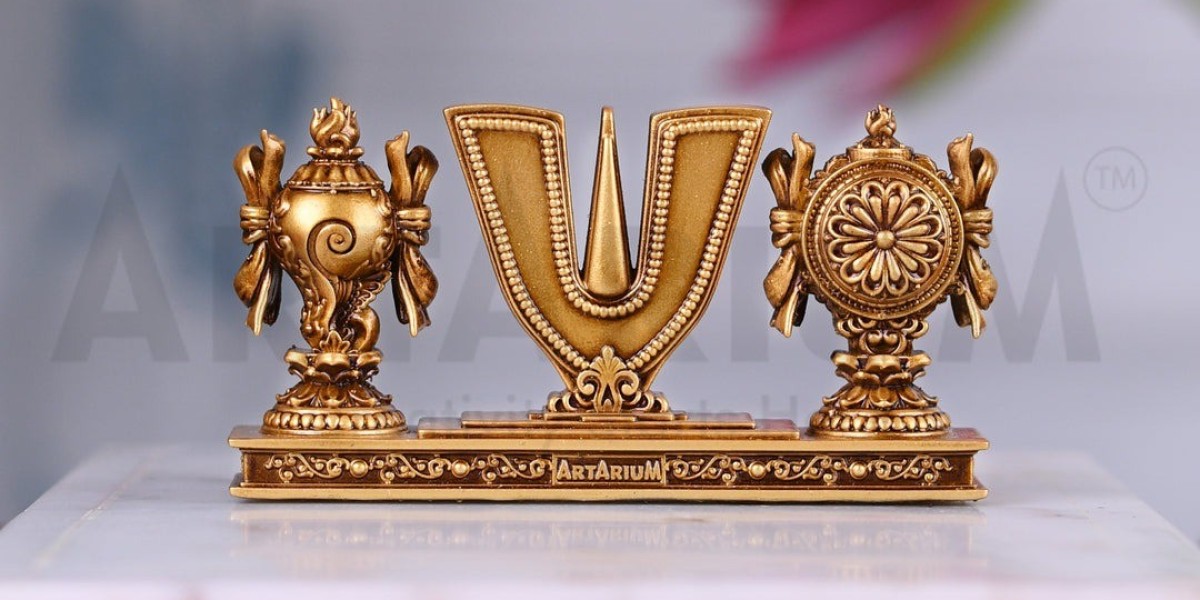In the vast landscape of Hindu spirituality, the figure of Lord Krishna stands as a beacon of divine playfulness, profound wisdom, and boundless love. Amidst the rich tapestry of rituals and practices dedicated to the worship of Krishna, the tradition of adorning his image with a sacred mark known as the "Krishna Tilak" holds profound significance. This article aims to unravel the origins, symbolism, and cultural importance of the Krishna Tilak.
Origins and Symbolism:
The Krishna Tilak bears deep symbolic significance within Hindu tradition, embodying various facets of Krishna's divine persona. Typically, the Tilak consists of a vertical line drawn on the forehead, often accompanied by a dot or crescent moon. This sacred mark symbolizes the divine third eye of intuition, spiritual insight, and cosmic consciousness.
In Hindu mythology, Lord Krishna is revered as the eighth incarnation of Lord Vishnu, embodying divine virtues such as love, compassion, and righteousness. The Krishna Tilak serves as a visual reminder of Krishna's eternal presence and his role as the ultimate source of spiritual wisdom and liberation.
Cultural Significance:
The tradition of applying the Krishna Tilak is deeply ingrained in Hindu culture and is observed during religious ceremonies, festivals, and daily worship rituals. Devotees believe that wearing the Tilak invokes the blessings of Lord Krishna and fosters a deeper connection with his divine energy.
Furthermore, the Krishna Tilak symbolizes the devotee's surrender to the divine will and their commitment to leading a life guided by the principles of dharma (righteousness) and devotion. By adorning themselves with the sacred mark, devotees seek to align their thoughts, actions, and intentions with the divine attributes embodied by Krishna, thereby attaining spiritual elevation and inner peace.
Rituals and Practices:
The application of the Krishna Tilak is accompanied by various rituals and prayers, each imbued with spiritual significance. Before applying the Tilak, devotees often purify themselves through ablutions and recite sacred mantras invoking the presence of Lord Krishna. The Tilak is then carefully applied to the center of the forehead, symbolizing the awakening of spiritual consciousness and the invocation of divine blessings.
During festive occasions such as Janmashtami, the birth anniversary of Lord Krishna, or daily worship rituals, devotees adorn themselves with intricate Tilak designs, often using sacred substances such as sandalwood paste, kumkum, or turmeric powder. These vibrant patterns serve as a visual expression of devotion and reverence towards the divine.
Conclusion:
In essence, the Krishna Tilak signifies the eternal presence of Lord Krishna's divine grace and wisdom in the lives of devotees. It serves as a poignant reminder of the devotee's commitment to spiritual growth, love, and devotion towards the divine.
As devotees continue to seek solace and spiritual guidance in the timeless teachings of Lord Krishna, the tradition of adorning the Krishna Tilak stands as a testament to their deep-rooted faith and devotion, transcending the boundaries of time, space, and worldly illusions.








